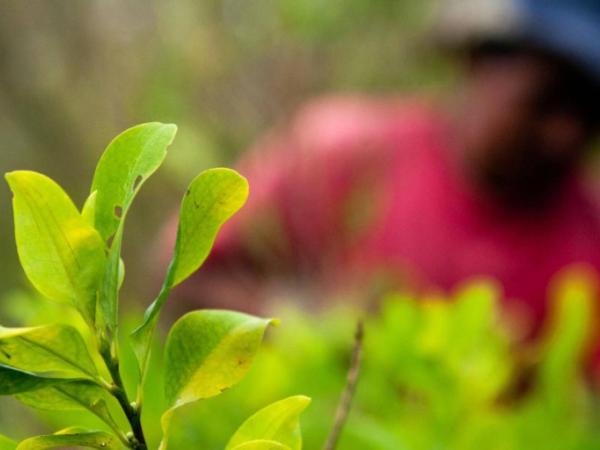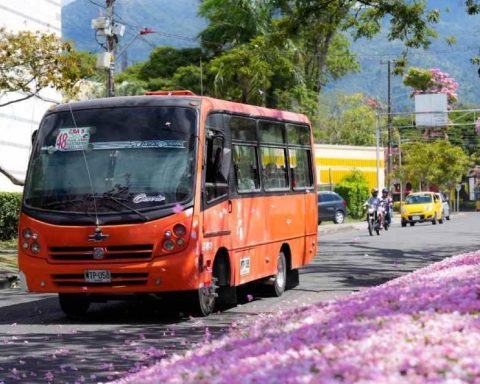Cocaine production in Colombia it shot up 53% in 2023 to reach 2,600 tonsmarking a new historical record in the largest producer of this drug in the world, according to a United Nations report published this Friday.
The annual report of the Office on Drugs and Crime (UNODC) also recorded the highest number of coca leaf crops, which last year reached 253,000 hectares, 10% more than in 2022. SThis is the highest figures recorded by the UN since it began monitoring the problem in 2001.
“Coca continues to be concentrated in areas where productivity is highest in its three phases, cultivation, extraction and transformation, making one hectare of coca today produce up to twice the amount of cocaine it produced two years ago.”said Candice Welsch, regional director of UNODC during the presentation of the report in Bogotá.
In 2022, Colombia had about 230,000 hectares of coca leaf plantationsraw material for cocaine, and produced 1,738 tons of the drug. The upward trend has been going on since 2014, despite the persecution of drug trafficking over five decades, with million-dollar assistance from the United States, the largest consumer of cocaine.
The signing of the peace agreement with the then FARC guerrilla in 2016 It also failed to break the boom of this drugfuel for the armed groups that prolong the internal conflict in Colombia.
In power since 2022, left-wing president Gustavo Petro considers the so-called anti-drug war a “failure” and is committed to a more focused approach on preventing consumption in developed economies.
In 2023, the territories that registered the greatest net increase in crops were Cauca and Nariño (southwest), strongholds of FARC dissidents who control the economy and daily life of extensive rural areas with his violent arm. The rebels impose terror in that region near the city of Cali, which will host the COP16 on biodiversity starting Monday.
(Read more: A drug trafficker requested for extradition by a US court is arrested in Colombia.)
Cocaine
iStock
(More news: The facts that make the US keep the terrorism alert high for 2025)
Areas of interest
Four departments, Cauca, Nariño, Putumayo and Norte de Santander (north), They register cultivation areas with more than 30,000 hectares. Nariño and Putumayo border Ecuador, whose president Daniel Noboa this week announced the identification, for the first time, of some 2,000 hectares of coca leaf plantations. 20% of the total area of these crops in Colombia is located on lands of Afro-descendant communities, 10% in indigenous reservations and 18% in protected forest areas.
On the other hand, the report highlights that the department of Cesar (north) stopped having coca crops in 2023. Despite the disarmament of the FARC, Other groups that profit from drug trafficking persistsuch as dissidents who rejected the peace agreement, rebels from the National Liberation Army (ELN) and the Clan del Golfo, the largest drug gang in the country. It’s a “increasingly fragmented and complex criminal panorama”says the report.
North America, Western Europe and South America They make up the main consumer markets in the world.

coca leaf
iStock
“Indolent system”
Petro considers the fight against drugs a “global, anachronistic and indolent system”. In March, before the United Nations Commission on Narcotic Drugs in Austria, the president criticized that historically his nation “put into practice all the wrong formulas“to combat the problem. “We sacrificed our development for a war that others wanted”said.
Colombia is experiencing an armed conflict against powerful guerrillas and drug trafficking cartels that for more than half a century has left 9 million victims, the majority displaced and murdered. The president asked the international community for “rethinking” of the approach to drug consumption “put the right to health at the center of the debates.”
A memorandum published by the White House in September warns of “record numbers” of coca crops and cocaine production throughout South America, although it recognizes in Colombia a 10% increase in cocaine seizures in 2023 compared to the previous year, equivalent to 841 metric tons.
At the same time, Joe Biden’s government is committed to a “holistic approach” to the drug problem that includes “security, justice and legal economic opportunities for the rural populations of Colombia.”
A study by the United Nations Development Program (UNDP) published in August ensures that the average income of a coca-growing family in Colombia is around $1,400 a year, less than half of the legal minimum wage in that country. 60% of respondents said they grew coca in the absence of other economic options.
(Read more: The new tool prepared by the Presidency to locate corruption scandals)
AFP

















